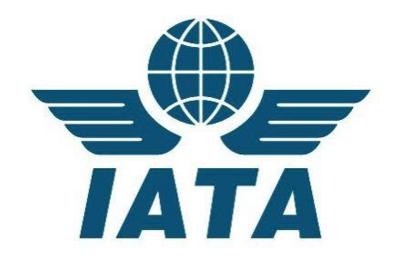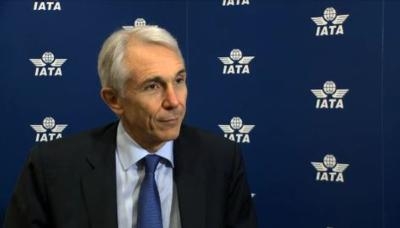Thu, Apr 07, 2016
The EUR 245 Billion Question - Why Everybody Has a Stake in European Airspace Modernization
The International Air Transport Association (IATA) has released a study projecting a one million job and EUR245 billion (approx. $279 billion) boost to European prosperity in 2035 from airspace modernization.

Europe is well-served by air connectivity, which today supports 11.7 million European jobs and $860 billion of European GDP. But it is inefficient. Average flights are nearly 50 kilometers longer than they need to be in terms of distance traveled and delays average around 10 minutes per flight. This inefficiency negatively impacts prosperity, productivity and sustainability. An IATA-commissioned study by SEO Economic Research estimated that these inefficiencies, if unchecked, will grow to cost the European economy EUR 245 billion in 2035.
“Air traffic management inefficiency is not just a burden for airlines. Travelers suffer wasted time from delays. The environment suffers from avoidable emissions. And businesses face reduced productivity. Combined, all of this has a cost on Europe’s competitiveness. And the cost is shared broadly. This study shows that every European—individual or business—has a stake in this issue,” said Tony Tyler, IATA’s Director General and CEO.
Europe has long had a plan to improve its air traffic management—the Single European Sky (SES) project—which aims to deliver a threefold increase in capacity, improve safety by a factor of 10, reduce environmental impact by 10%, and cut costs by 50%.
“Europe has failed in achieving the SES goals. Despite a strong European Commission vision and push for SES, national interests have prevailed. The incentive to improve efficiency is to make Europe more prosperous with the realization of EUR 245 billion and one million jobs in 2035. The launch of this study is a call to action across the spectrum of business and individual interests in Europe to help deliver a stronger, more connected economy,” said Tyler.
A fully modernized and reformed airspace in 2035 (compared to a “do nothing” scenario in which the status quo prevails) will generate tangible benefits to European tourism, trade and the knowledge economy. Examples of incremental and indicative improvements include:
- 1.3% more hotel beds to aid the tourism industry
- Up to 2.2% faster expansion of trade in services
- 5.5% more patent applications and 4.7% greater research spend
- 1.3% more employment in knowledge-intensive industries

“Predicting the future is always fraught with uncertainty. But the starting point already shows a clear gap. The US has one provider to manage its airspace and Europe has 38 providers to manage a similarly complex air transport sector. And if nothing is done, the problem will only get worse,” said Tyler (pictured).
The release of the study marks the launch of a Europe-wide campaign. IATA will be calling on consumer groups and business associations to recognize the broad importance of efficient air connectivity to the economy, productivity and quality of life at the national level. “Quantifying the value of what we are aiming for in jobs and GDP should be a great motivator in aligning national policies and action with a vision for an efficiently-connected and competitive Europe. EUR 245 billion is a worthy goal!” said Tyler.
(Source: IATA news release)
More News
Very High Frequency The frequency band between 30 and 300 MHz. Portions of this band, 108 to 118 MHz, are used for certain NAVAIDs; 118 to 136 MHz are used for civil air/ground voi>[...]
Aero Linx: Aviation Suppliers Association Established February 25, 1993, the Aviation Suppliers Association (ASA), based in Washington, D.C., is a not-for-profit association, repre>[...]
Have A Story That NEEDS To Be Featured On Aero-News? Here’s How To Submit A Story To Our Team Some of the greatest new stories ANN has ever covered have been submitted by our>[...]
From 2021 (YouTube Version): Colorado Campus Offers aVariety Of Aerospace Entertainment And Education Wings over the Rockies Exploration of Flight is the second location for the Wi>[...]
Also: Paramotor Champ's, Electric Ultralight, ICON BK Update, Burt Rutan at Oshkosh! The Popular Rotorcraft Association is reaching out for help in rebuilding their private runway >[...]
 ANN's Daily Aero-Term (05.17.24): Very High Frequency
ANN's Daily Aero-Term (05.17.24): Very High Frequency ANN's Daily Aero-Linx (05.17.24)
ANN's Daily Aero-Linx (05.17.24) ANN FAQ: Submit a News Story!
ANN FAQ: Submit a News Story! Classic Aero-TV: ANN Visits Wings Over The Rockies Exploration Of Flight
Classic Aero-TV: ANN Visits Wings Over The Rockies Exploration Of Flight Airborne Affordable Flyers 05.16.24: PRA Runway, Wag-Aero Sold, Young Eagles
Airborne Affordable Flyers 05.16.24: PRA Runway, Wag-Aero Sold, Young Eagles




